I’ve said it before: I’ll take my quarantini shaken, not stirred.
In the spirit of adventure and bold experimentation, I recently decided to try my hand at crafting cocktails. While I typically defer to beer or wine as my beverage of choice, there’s something particularly relaxing about slowly savoring a crisp, refreshing mixed drink. I love the infinite pairings of gin and citrus, vodka and fruity goodness, and whiskey and just about anything, and I realized trying my hand as a mixologist would allow me to dazzle my taste buds and create a mini adventure in a glass—all from the comfort of my own shelter-in-place home.
Cocktails date back to the 18th century when the British began serving combinations of spirits, fruit juice, and spices at social gatherings. Indeed, the word “cocktail” was first used in a British newspaper in 1798, but the term didn’t fully take on its modern meaning until it crossed the pond in the early 1800s and took on the American definition as “a stimulating liquor composed of any kind of sugar, water, and bitters.”
Shortly thereafter the art of “bartending” evolved in the States, largely in part to a man named Jerry Thomas. A creative mixologist who worked throughout the U.S. and Europe, Thomas penned one of the first comprehensive cocktail recipe books, The Bartender’s Guide, and this educational text quickly became a foundational staple for drink lovers everywhere.
While Thomas was a pioneer in his craft, industrialization certainly helped the evolution of cocktails with regards to one key ingredient: Ice. Once consumable, ice became more portable and sustainable in all climates—particularly the warm ones—bartenders unearthed a whole new realm of possibility and became infinitely more experimental in their indulgent pursuits. Now, people everywhere could enjoy a frosty sidecar or a chilled highball versus a murky glass of tepid bathwater, and the possibilities for cocktails exploded.
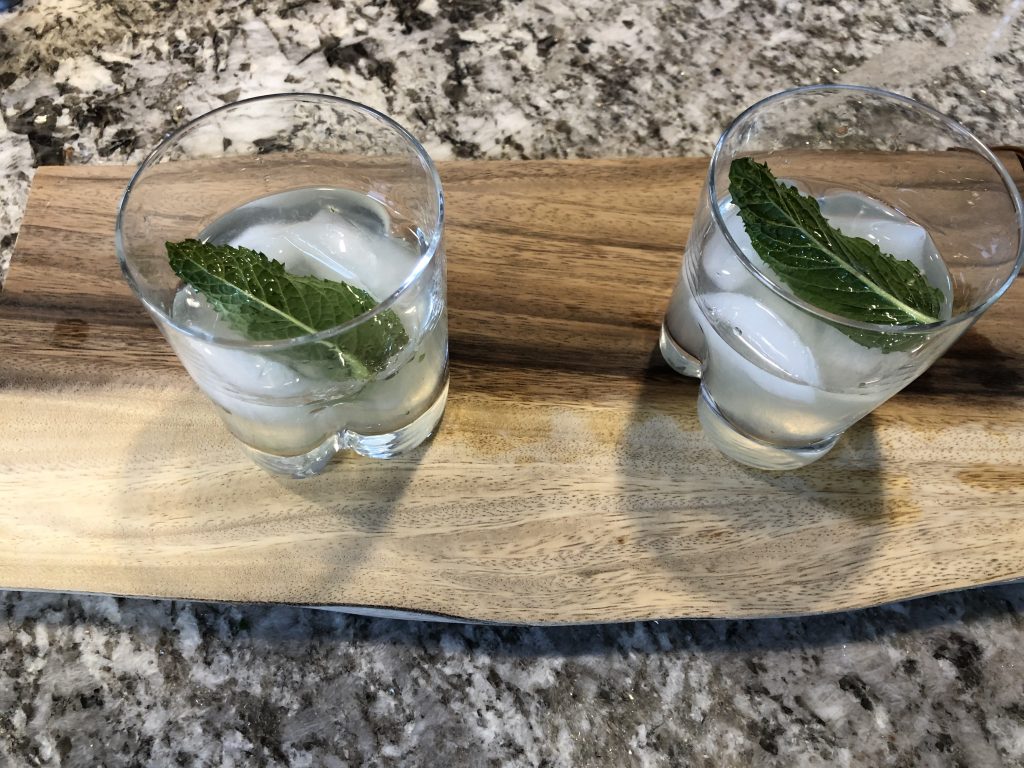
Since these initial iconic milestones, cocktail culture has continued to evolve throughout American history. During Prohibition (1920-1933) cocktails were illegal but still readily sought after, and consumer trends highlighted a notable shift from whiskey to gin because gin doesn’t require aging and is therefore easier to illicitly produce. With wine and beer less readily available, liquor-based cocktails quickly rose in popularity, and, in true 1920s style, the concept of the “cocktail party” was born[1].
Cocktails continued to ebb and flow in popularity throughout the subsequent decades, but they experienced a significant resurgence in the 1980s when vodka readily began to substitute gin in now iconic drinks such as the martini. This resurgence hit an even greater height in the early 2000s—because, you know, millennials—and since then cocktail culture has continued to experience a modern renaissance that draws inspiration from traditional drinks but utilizes novel ingredients and increasingly complex flavors[2].
What better time than a pandemic to get crafty, stock up on fresh ingredients, hunker down, and join the cocktail bandwagon? To make things interesting—and because I’m desperate to create as many excuses to online shop as I possibly can— I set out to order a cocktail “cookbook” I could systematically work through in order to test new, inventive alcoholic creations. A simple Google search quickly led me to my book of choice: Tim Federle’s Tequila Mockingbird: Cocktails with A Literary Twist. The title says it all, and I knew instantly I’d ecountered a fortuitous moment of scholarly cocktail bliss.
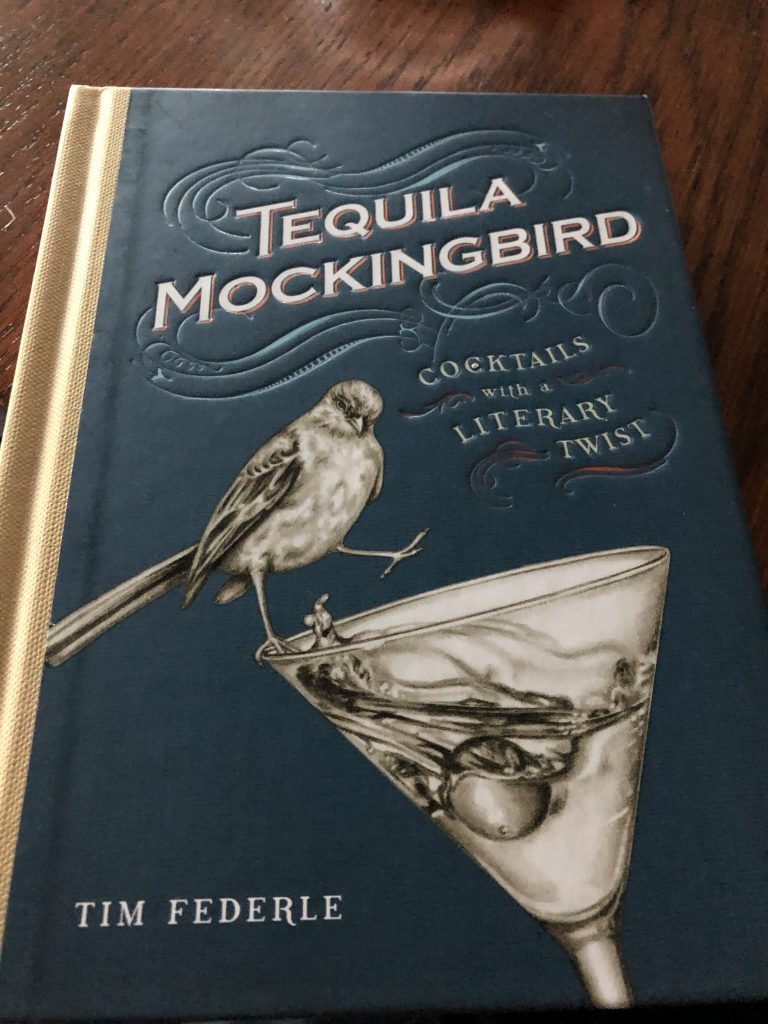
Tequila Mockingbird speaks my language on a plurality of levels. Federle hooks bibliophiles and cocktail enthusiasts alike with this cheeky opener:
“An English major walks into a bar…
Congrats. You fought through War and Peace, burned through Fahrenheit 451, and sailed through Moby-Dick[3]. All right, you nearly drowned in Moby-Dick, but you made it to shore—and you deserve a drink!”
Are you not entertained?! Don’t worry, it only gets better.
“A fun gift for barflies and a terrific treat for book clubs, Tequila Mockingbird is the ultimate cocktail book for the literary obsessed. Featuring 65 delicious drink recipes—paired with wry commentary on history’s most beloved novels—the book also includes bar bites, drinking games, and whimsical illustrations throughout.”
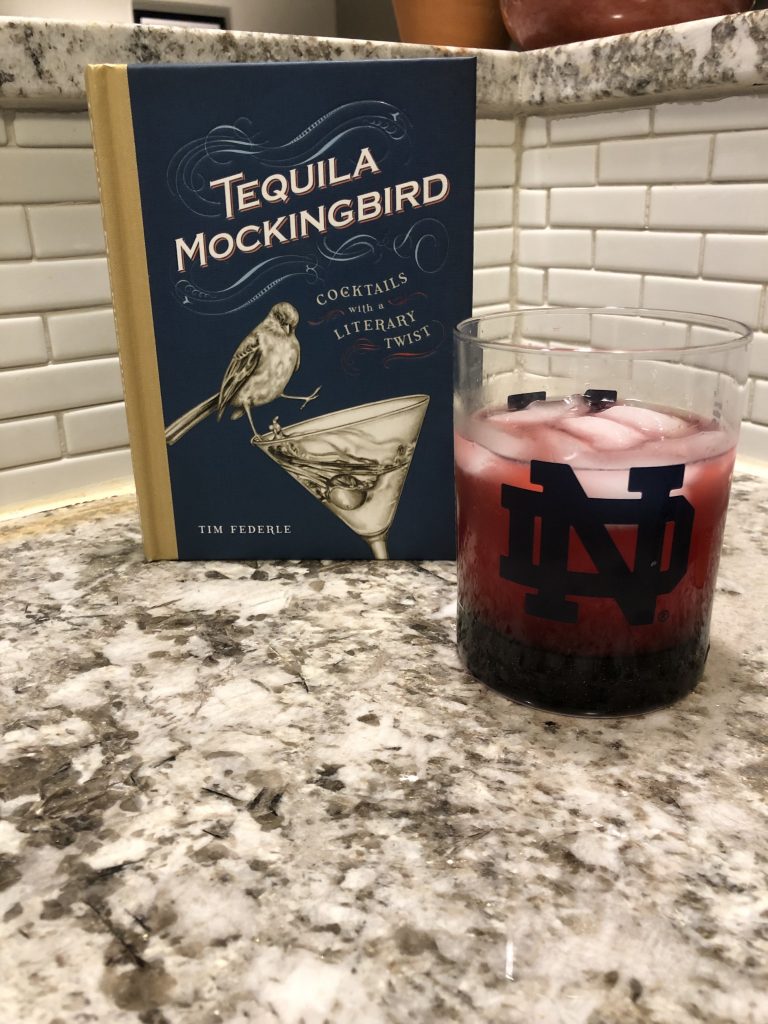
Federle continues to tout Tequila Mockingbird as “a scholarly sip for word nerds” and a revamped “SparkNotes with a liquor license.” Each drink reworks famous literary titles into punchy alcohol-related puns, and Federle promises, “Even if you don’t have a B.A. in English, tonight you’re gonna drink like you do.”
So, how does one—particularly one who does have a B.A. in English—even know where to begin?
Well, as is the case with all good reading endeavors, the first page is typically a great place to start.
Let the literary drinking games begin!
The very first recipe in Federle’s book is based off Ken Kesey’s One Flew Over the Cuckoo’s Nest. Aptly named “One Flew Over the Cosmo’s Nest,” this drink combines vodka, cranberry juice, triple sec, and lime juice to craft a scrumptious antidote that begs the question: “Who’s the real crazy here?” As Federle writes, “liberate your own hemmed-in ways with a Cosmo you’d be cuckoo to pass on.” Cam and I loved[4] this drink and found it the perfect combination of tart, tang, and fresh. True to Federle’s warning, “it’s hard to stop at just one of these, especially if all the other voices in your head are parched, too,” and we couldn’t help but indulge in a few more drinks to satiate our newly emerged Coronavirus crazy.
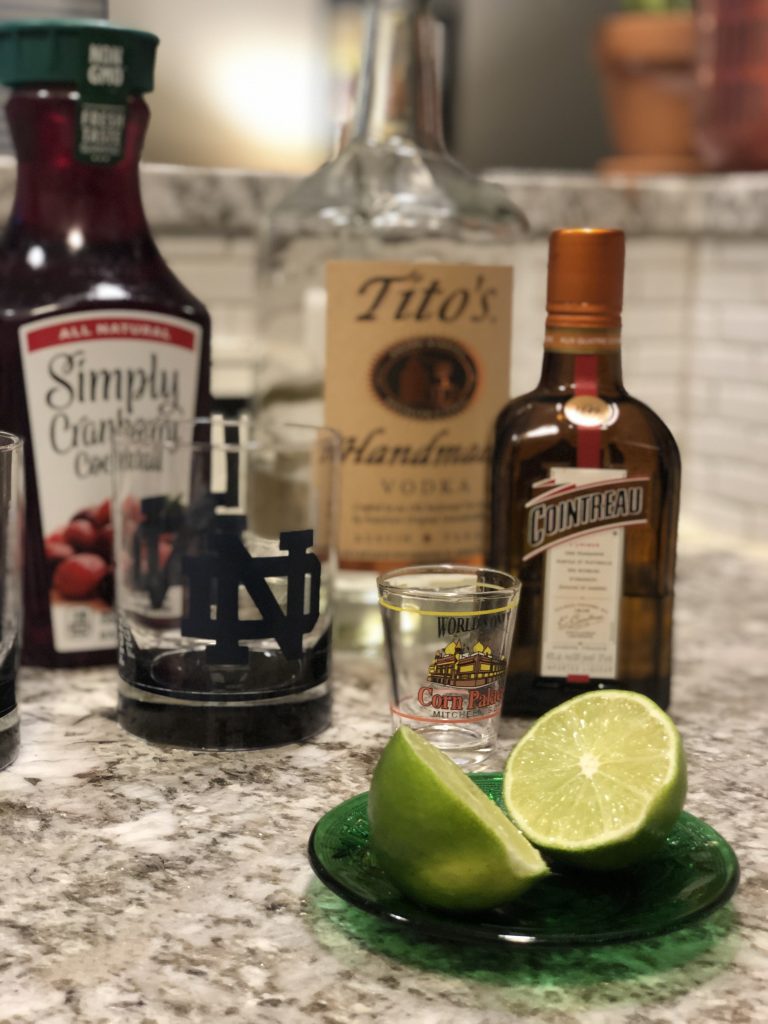
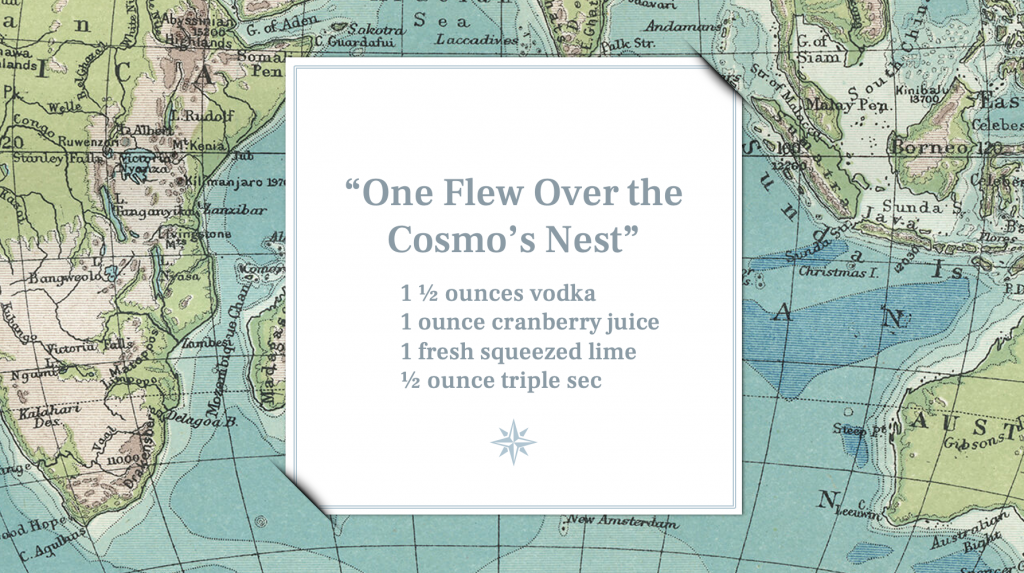
For our second cocktail adventure, we decided to sample our new book’s namesake: The “Tequila Mockingbird.” Not so much a cocktail as it is a straight up shot, this drink combines tequila and hot sauce with a pickle chaser. As Federle claims, “all one-hit wonders should hit so hard[5],” and “after a conclusion that leaves you both hopeful and haunted, toast to a sometimes sour justice system with a tequila shot that’s guilty of packing a dill pickle punch.” This drink is as simple—and spicy—as it sounds: Simply add a few dabs of Frank’s RedHot into a shot of tequila, toss it back, and finish it off with a fresh pickle. And remember to stay strong: Federle warns, “if you can’t stand the heat, get out of the South.” Point well taken.
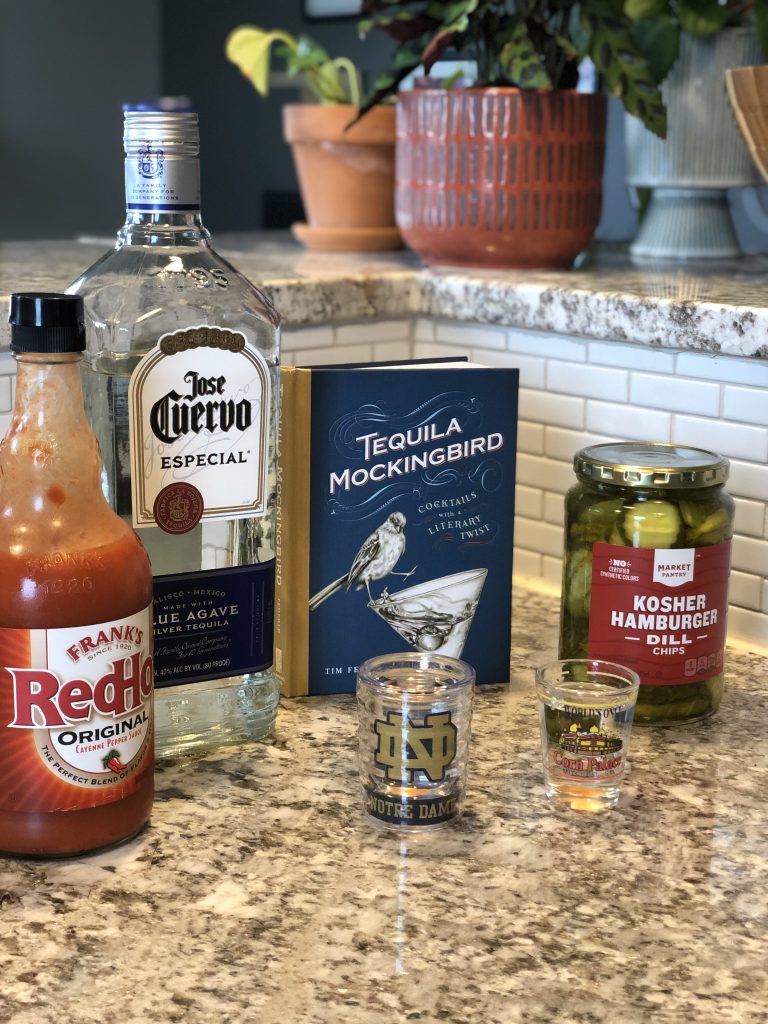
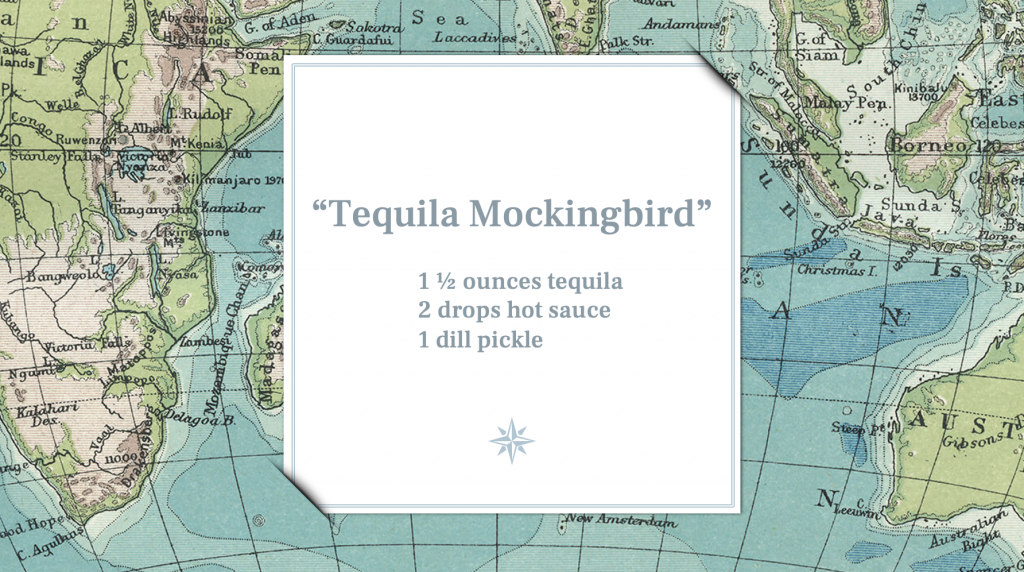
Looking to sample something a little sweeter after dabbling in the realm of all things spicy, for our next drink we selected a classic, “Gin Eyre.” Named after Charlotte Bronte’s popular English novel, Jane Eyre[6], this cocktail will make you feel like a lovesick governess looking to escape her abusive orphan upbringing, marry her employer (the dark, brooding, mysterious Mr. Rochester), and ultimately find happiness[7]. “Gin Eyre” combines fresh mint, English gin, lemon juice, orange bitters, and a dash of sugar that aptly paints a positive, rosy glow around the implausible dream dear Jane so feverishly chased.
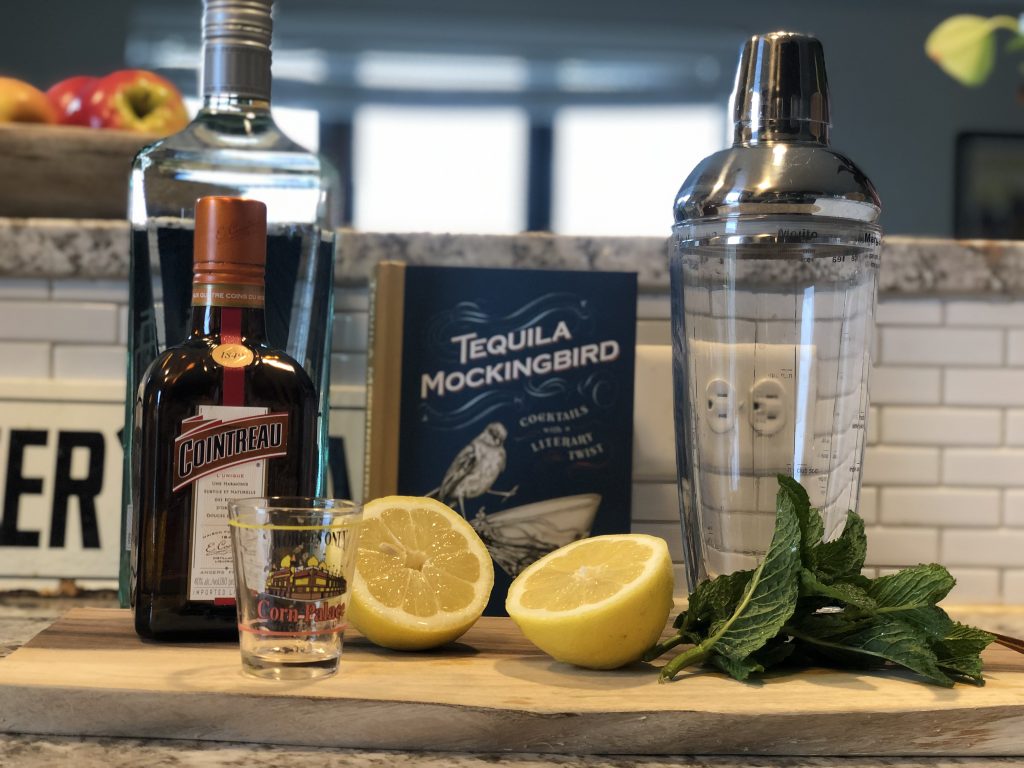
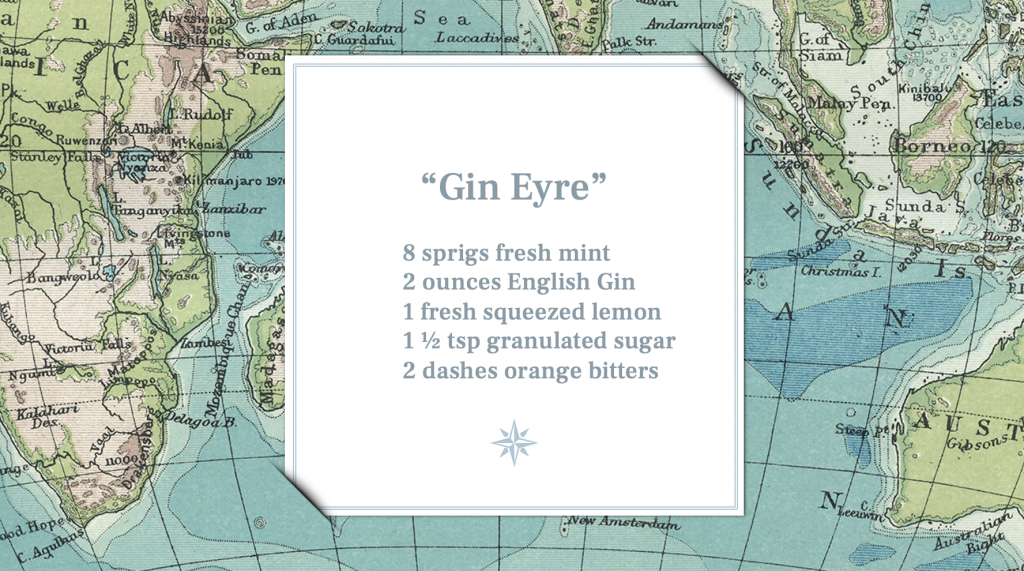
As the saying goes, “so many books, so little time.” Similarly, we have thus far only scratched the surface of the 65 sinfully tantalizing recipes Federle’s book has to offer, and I cannot wait to continue the experimental process and expand my cocktail repertoire. I find “Rye and Prejudice” (whiskey meets grapefruit juice), “A Midsummer Night’s Beam” (mint, lime, sugar, and bourbon dashed with a hint of club soda) and “Huckleberry Sin” (blueberries, blackberry jam, vodka, and club soda all decide to party) particularly intriguing, and I’m determined to drink my way through this mini library of literary parodies.
While none of these recipes call for “tangerine” per se, there is something particularly “atomic” about my cocktail creations. True, this experimental inquiry was relatively microscopic and granular in scope, but the consequence had an explosive impact. Thus, according to both definitions of “atomic,” this quarantine activity allowed me to discover little joys in little moments and ultimately explore something new. Sometimes Alice needs to have her adventures in Wonderland, fall down the metaphorical rabbit hole, and believe “as many as six impossible things before breakfast” in order to truly view her world from a different lens. Sometimes it’s experimenting with the small stuff that ultimately yields the largest returns, reframes our outlook, and challenges us to recognize the teeming possibility (and fun!) in the otherwise ordinary and mundane.
I can certainly raise a glass to that.
Cheers!
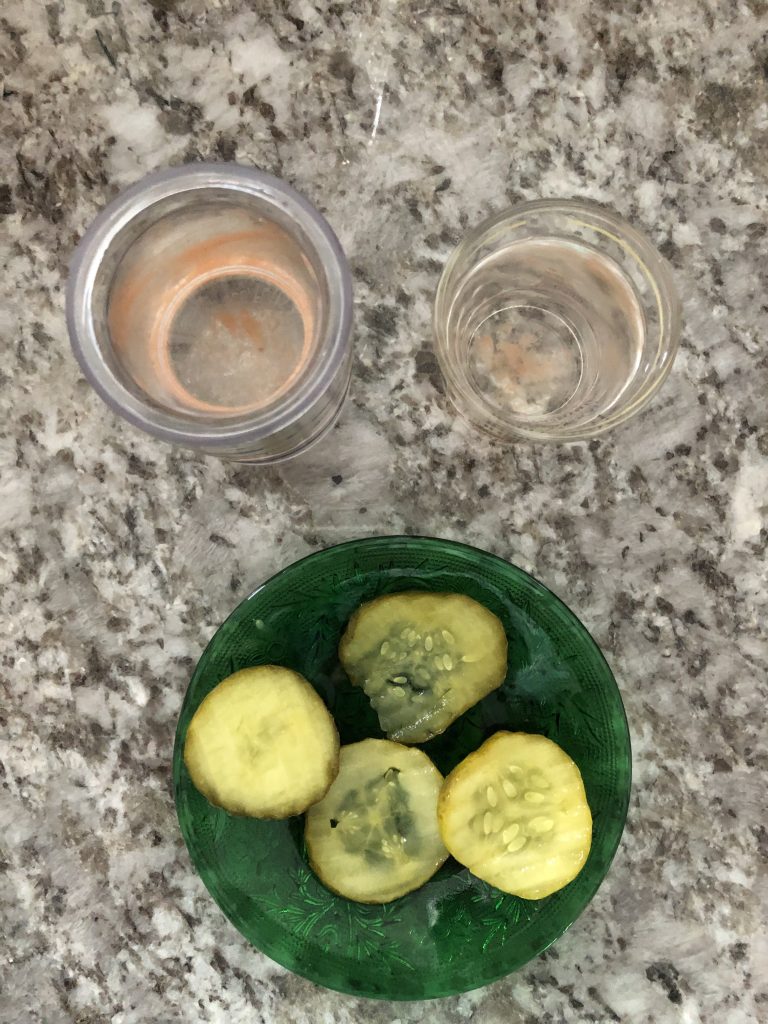
[1] *As any reader of The Great Gatsby can readily attest.
[2] Because, you know, millennials. Whoops: Did I say that twice?
[3] Terrific thematically themed verb choices. I see you, Federele. I see you.
[4] Italicized and underlined?! Now you know it’s serious!
[5] To Kill a Mockingbird was the only book Harper Lee published in her lifetime… and it became a very famous book at that!
[6] Jane? Gin? This one was almost too easy!
[7] You know, as we are all looking to do in life.



Comments are closed.